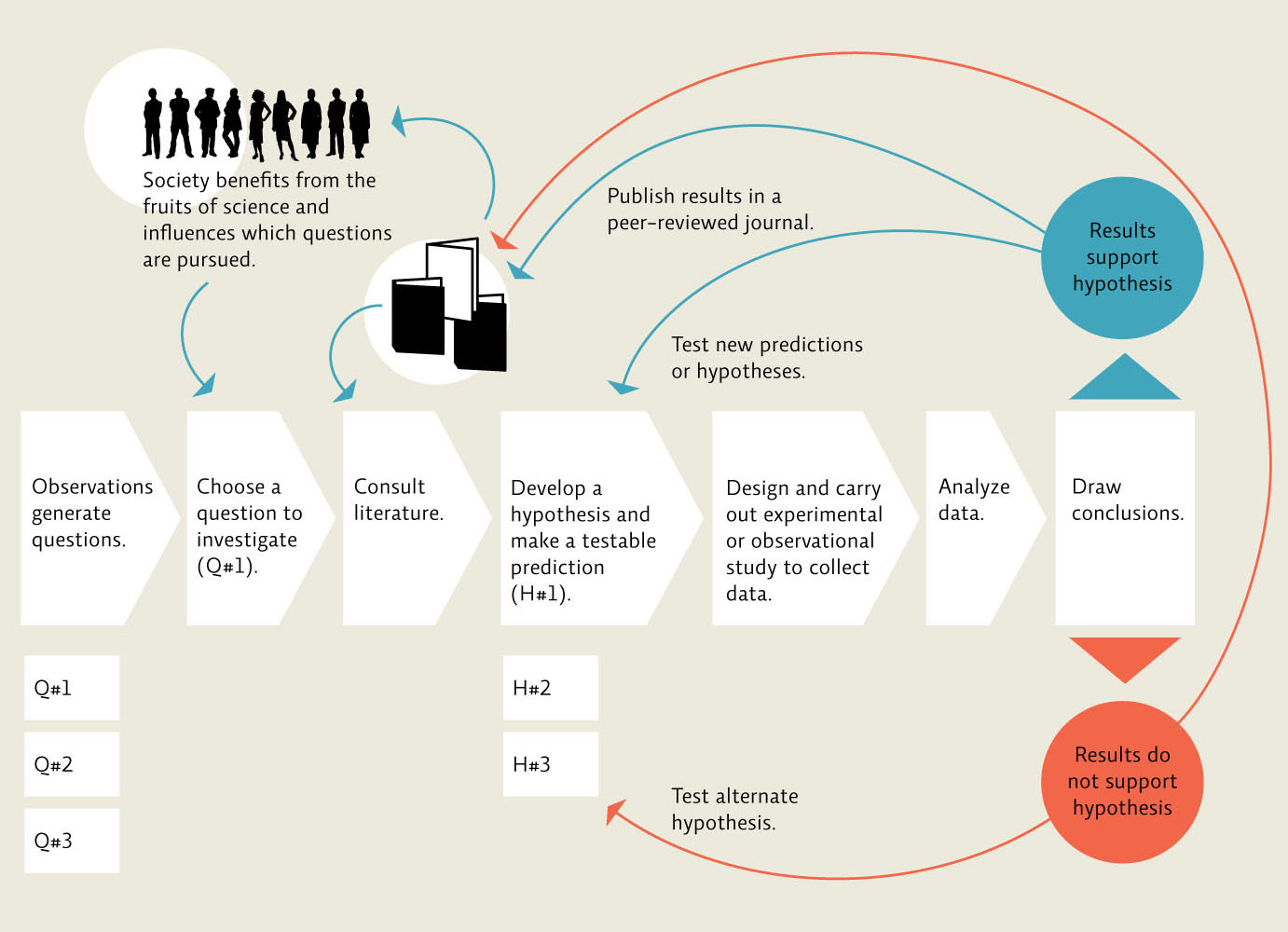2.4 The scientific method systematically rules out explanations.
Farman’s data was compelling, but would it hold up to scrutiny? Less than a year after his research was published in 1985, in the journal Nature, NASA scientists published their own report, verifying what Farman had observed. This corroboration strengthened Farman’s conclusions. That ozone was depleting much faster than earlier projections set off alarm bells. These data provided a correlation between the presence of CFCs and ozone depletion—both occurred together. It suggested that CFCs may be related to ozone decline, but did not establish a cause-and-effect relationship. The two trends could occur together by coincidence, or something else entirely could be causing both to occur.
26
To get a better picture of what was going on, scientists needed to further apply the scientific method, in which they would work logically and systematically to design studies specific to the question being asked. The fact that the ozone layer was thinning above the Antarctic triggered great debate among scientists, resulting in more than one possible explanation, known as hypotheses, for what was occurring. Some researchers thought that Antarctic air was mixing and lifting lower, low-ozone air into the stratosphere, changing the concentration. Other researchers believed that solar activity was creating nitrogen oxides (NOx) which could be destroying ozone, as the amount of NOx fluctuated with sunlight in the Antarctic. But Susan Solomon had a different idea.
Solomon was a young scientist when she visited Antarctica in 1986 and 1987, the beginning of her long relationship with the southern, icy world. While trying to understand why ozone was disappearing over the region, Solomon kept thinking about temperature. October is spring in Antarctica, and scientists knew that cold spring winds would swirl around, producing a cyclone of air in the atmosphere (a polar vortex), keeping cold air in place over the poles and leading to the formation of polar clouds in the stratosphere. Solomon proposed the hypothesis that cloud particles in the polar stratospheric clouds were providing surfaces for the reactions that would free chlorine molecules (Cl2) from CFCs. In sunlight, the chlorine molecules would then break up into chlorine atoms. These isolated chlorine atoms destroyed ozone—particularly in the Antarctic spring, when sunlight streamed in.
Scientific hypotheses must be testable (generate predictions about what we could objectively observe if we conducted the test). In turn, these predictions must be falsifiable, meaning that it would be possible to produce evidence that shows the prediction is wrong. (Predictions based on untestable ideas—such as, “reincarnation exists” —are not falsifiable and therefore are not considered suitable for science.) In this way, if that falsifying evidence does not appear, it may be reasonable to conclude that the evidence supports the prediction.
Notice we do not claim that the hypothesis is proven, only that it is supported (or confirmed). This is a hallmark of the tentative nature of science. “Proven” suggests we have the final answer; science, however, is open ended, and no matter how much evidence accumulates, there are always new questions to ask and new studies to conduct that could alter our conclusions. But this does not mean that all possible explanations are equally valid. This is precisely the reason why hypotheses must be tested again and again and in different ways. As evidence mounts in support of a hypothesis, the probability that it is wrong lessens and it becomes unreasonable to reject the hypothesis in favour of another, less supported explanation. But, in keeping with the tentative nature of science, even the best-supported hypotheses will be revised or even abandoned if new data strongly supports a new conclusion. [infographic 2.2]

27
Once a study is conducted and data gathered, the data are evaluated to determine whether they confirm or fail to confirm the hypothesis, but the scientific process doesn’t end there. If a hypothesis is rejected, alternative hypotheses can be tested. If a hypothesis is confirmed, the researchers should repeat the study to validate the data. They can also generate new predictions that test the same hypothesis from different angles. As evidence mounts from replicate studies and from multiple predictions, we become more confident in our data and conclusions. [infographic 2.3]
